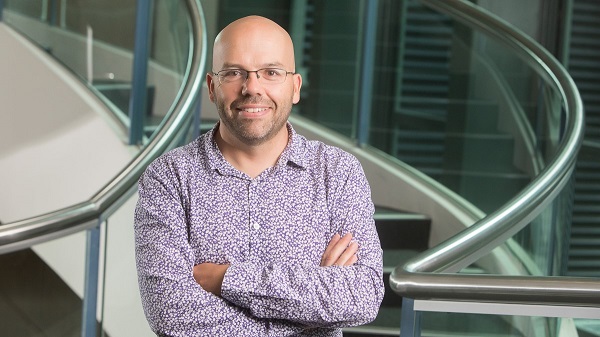How rare disease discovery could help all of us
All parents think their kids are special, but those born with a rare genetic disease genuinely are one in a million. But the drivers behind these scarce conditions are incredibly challenging to pin down and, until a diagnosis is determined, the wait can place immense strain on patients and their family.
But the arduous task of ferreting out a rare disease’s genetic roots is worth the effort, in more ways than one. Not only does it provide a diagnosis and possible treatment for the patient, but such discoveries also have the potential to help the wider population.
Take, for instance, the ubiquitous Epstein-Barr virus (EBV). This member of the herpes family of viruses infects some 95% of people, who then harbour it for life.

Most people are asymptomatic; some go on to develop glandular fever. But for anyone with a suppressed immune system, such as organ transplant recipients, EBV is potentially life-threatening. For them, EBV can cause lymphoma, and there is no licenced vaccine against the virus yet.
Also susceptible to EBV are boys with a rare immunodeficiency called X-linked lymphoproliferative disease, or XLP. Unless treated, many die before they reach their teens.
Their genetic Achilles’ heel is a recessive gene variant on their X chromosome, which renders them incapable of mounting an effective anti-EBV immune response. This is despite the immune system of such boys being able to defend against other herpes viruses, says Professor Stuart Tangye, leader of Immunity and Inflammatory Diseases research at the Garvan Institute of Medical Research.
“By studying these kids, it tells you exactly what the immune system needs to make a productive and predictive response against EBV,” Tangye explains. Such work could be used to develop more effective vaccines against EBV.
Elements for rare disease discovery
Tangye’s work with patients with rare diseases began in the late 1990s when, as a postdoctoral cell biologist in California, he had the opportunity to study immune cells from a patient with XLP. “That, to me, was one of those ‘Eureka!’ moments when I thought: ‘Wow, I can do work on humans with defined genetic defects and this can tell me about the cause of their disease – which immune cells work and which don’t’,” Tangye says.
At the time, whole genome sequencing was the hot new technology – the Human Genome Project was on the cusp of releasing its “rough draft” – but the process was slow and cost billions of dollars.
As with all technologies, whole genome sequencing eventually became cheaper. Garvan, in 2012, established its own whole genome sequencing facility and, in 2014, was one of the first institutes in the world to procure machines capable of sequencing a complete human genome for under US$1000.
Around the same time, a new technology called CRISPR-Cas9 revolutionised gene editing. Suddenly, suspect genetic variations could be quickly and easily inserted in mice to see if they displayed a patient’s phenotype. And Tangye, who by then had returned to Australia and been with Garvan for nearly a decade, realised all the elements needed for a rare disease diagnosis and research program were within reach.
He had already fostered an informal network of clinicians who sent patients his way on an ad hoc basis. Whole genome sequencing was literally under Garvan’s roof. Rare disease mouse models could be generated in a matter of weeks to months, instead of years, and laboratories like his took care of the human cell biology aspect.
“The planets lined up – we just needed to bring everything together and formalise it,” Tangye says. And in 2015, the Clinical Immunogenomics Research Consortium Australasia – or CIRCA – was born. From its 3 founding member institutes, CIRCA’s team of clinicians and researchers now spans 15 organisations in Australia and New Zealand.
How CIRCA finds the needle in the haystack
Clinicians who are stumped for a diagnosis refer patients to the CIRCA pipeline, where they’re vetted by a multidisciplinary team including geneticists, genetic counsellors and clinicians. Should the patient meet certain criteria, they’re enrolled in the program, and their entire genome sequenced and scoured for anything that looks amiss – no matter how tiny.
Sometimes a disease comes down to a single point variation. That’s 1 defect in more than 6 billion nucleotides.
“In about 30 to 40% of cases, we would get a genetic diagnosis, which we’d then report back to clinicians,” Tangye says. “If we didn’t get a result through that conventional way, we have mechanisms by which we can really do detailed genetic analysis and look for unconventional alterations in the DNA to see if we could explain the disease.”
For some, finding the defective needle in their genetic haystack can take years of persistence. Recently, Tangye’s team solved a case brought to them back in 2013.
“I’ve been working in this space for 20 years now and it’s been really gratifying coming this far in less than 5 years with CIRCA,” he says.
“With almost every patient that we get, we have the chance to do something useful for them and their family and then, perhaps, the broader population.”
By Bel Smith
Updated 3 months ago